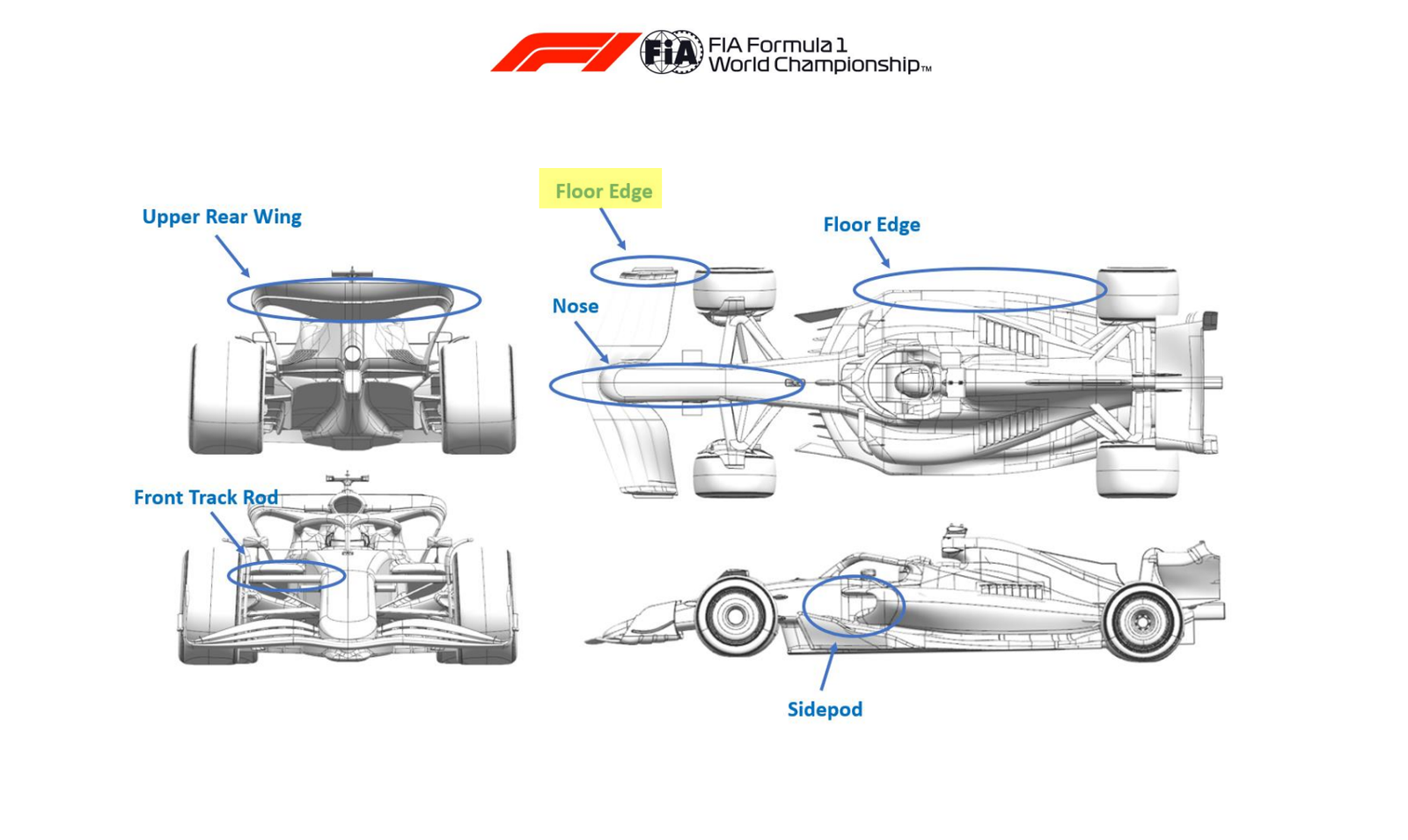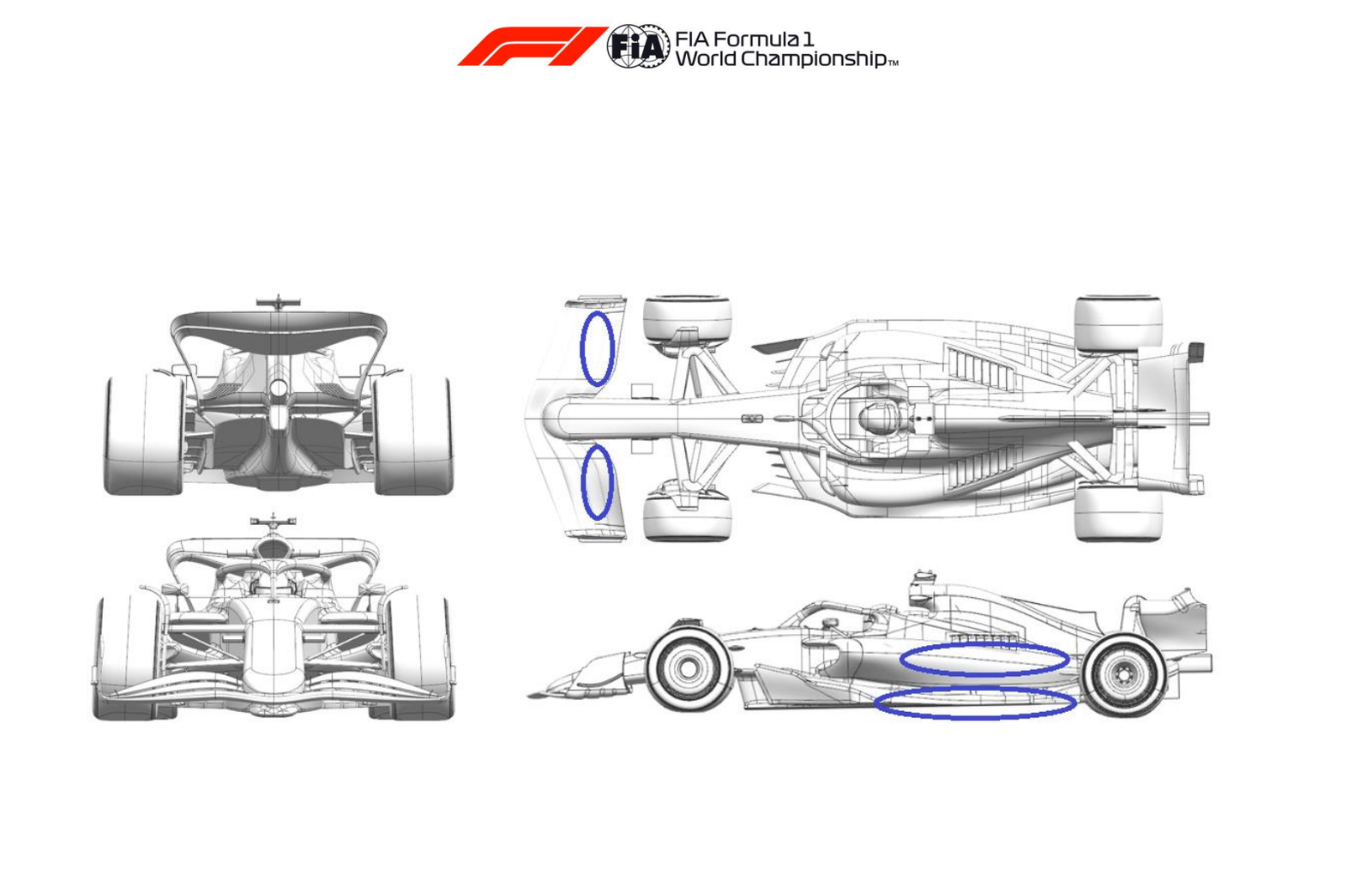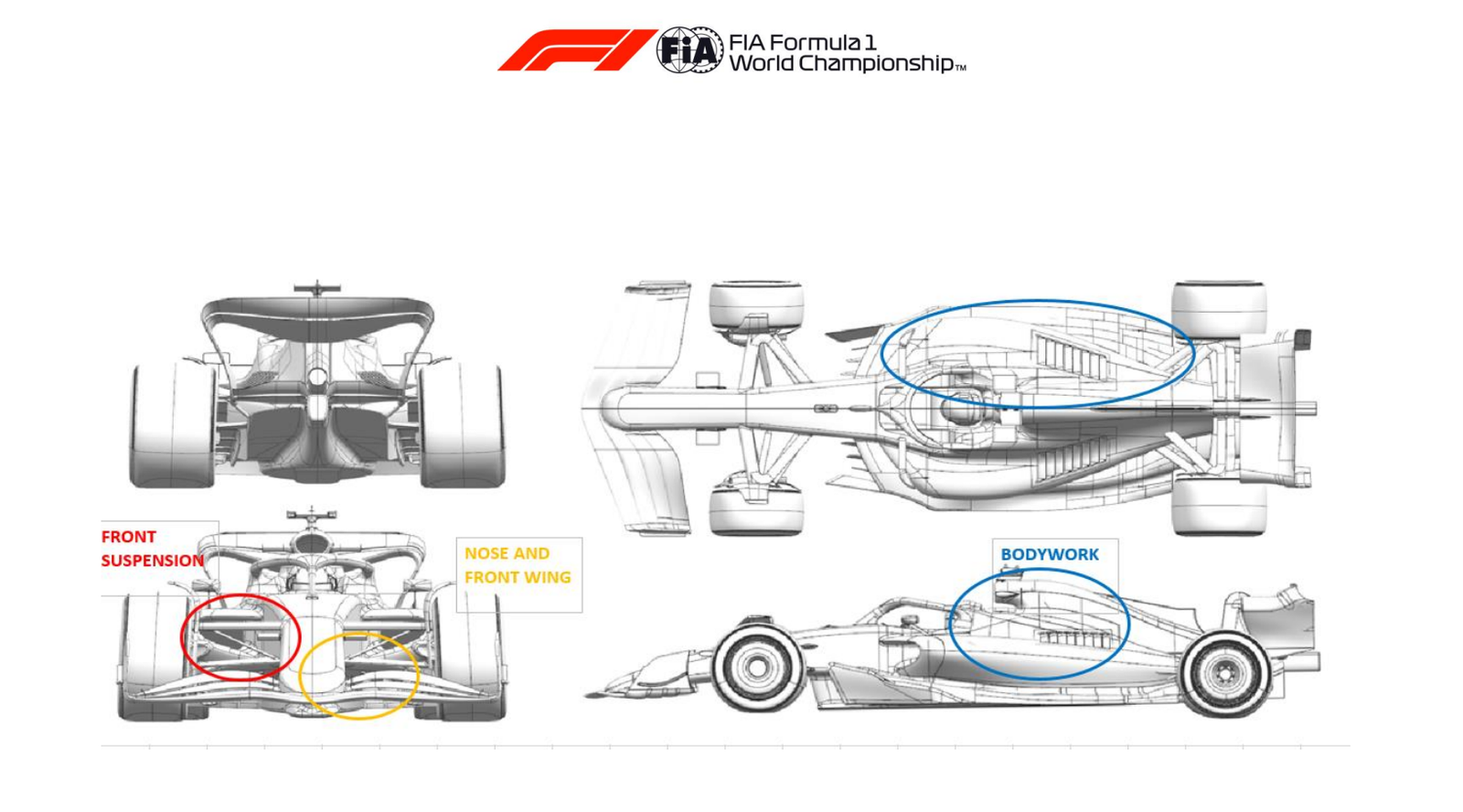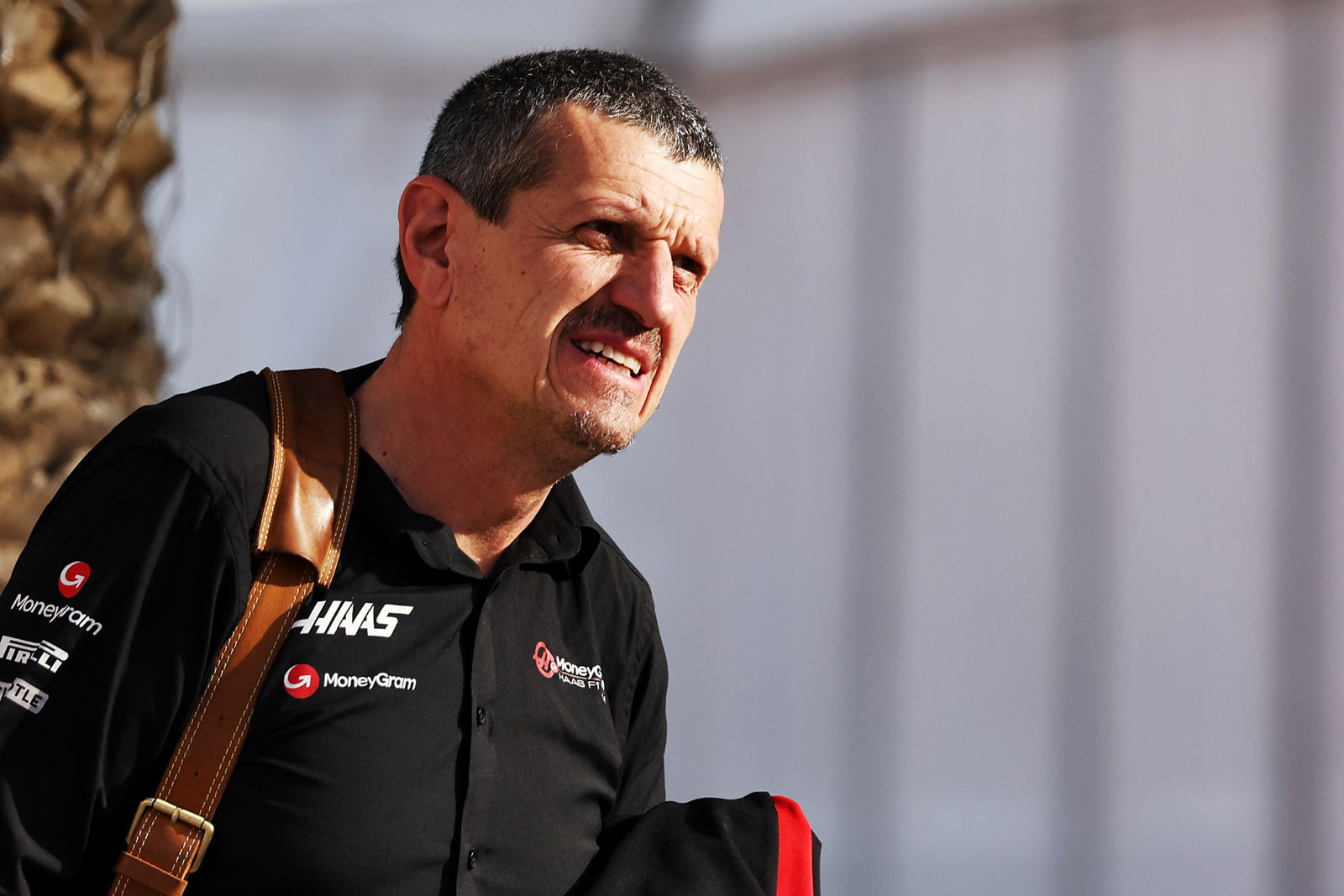Revealed: The six upgrades Mercedes have brought to F1 Bahrain Grand Prix

Mercedes upgrades
Small flicks on the front wing
The flicks help focus the vorticity shed from the wing tip vorticity, improving performance over a wider range of front ride heights.
Lifted tips on the rear wing
Offloading the tip of the wing has shed drag efficiently - this is important for Bahrain and a number of circuits in the early part of the season
Re-profiled underside of nose
Increased front wing local load and improved conditioning of the flow under the chassis and downstream - notably to the underfloor and fences.
Small floor changes
Increased forward floor load, and cleaner rear floor edge wing vortex - which in turns increases diffuser load.
Narrower sidepod inlet
Improved flow internally to the radiator resulting in more efficient engine cooling; also improved flow to the rear floor edge, providing more rear downforce.
Change in front suspension height
Dropping the track rod has improved the effectiveness of the lower wishbone to turn (downwash) the flow from the front wing for the benefit of the underfloor.

Red Bull upgrades
Floor Edge
It is not a change the team chose to pursue, nor was it beneficial to car performance so the resulting geometry was aimed at minimising the incurred loss.
Front Wing
Given the opportunity to evolve the wing, more load was derived overall without increasing the downstream consequences.
Coke/Engine Cover
Given the opportunity to optimise the cooling from the data garnered in 2022, the layout has changed subtly and the topbody exit duct has changed to reduce consequences downstream on the exit.

Ferrari upgrades
Front Suspension
We have moved from a configuration with a high track rod to one with a low track rod, driven by the demands of the aerodynamics
Front Wing
The primary element is no longer attached to the nose, instead it is floating
Coke/Engine Cover

Alpine upgrades
Front Wing
Increase local load while delivering cleaner air to the back of the car thus bringing more overall aero performance to benefit lap-time
Nose
Improve flow structures to the back of the car and, as per above, brings more overall performance
Front Suspension
Improve flow structures to the back of the car to complement the aforementioned supporting areas to bring overall performance
Front Corner
Aero development to increase local load as well as an improvement to the front brake cooling configuration
Floor Body
A key area of development in 2022. Now a completely new floor design, as well as floor fences, underlying floor profile, floor edge and diffuser to improve local load.
Coke/Engine Cover
Completely new bodywork shape and cooling exit positions to improve local load and have better flow conditioning to the back of the car.
Rear Suspension
New for 2023, pushrod design (not pullrod) to save weight and to better optimise aero development at the rear of the car
Rear Corner
Improved suspension optimisation and brake duct local load as well as brake cooling improvements
Beam Wing
Aero optimisation of local load and drag.
Rear Wing
Aero optimisation of local load and drag.
McLaren upgrades
Front Wing
The front wing improves the upstream flow conditions for the car increasing overall car downforce. We moved to a two-element adjustable flap which has a larger aerobalance range
Floor Body
The floor is designed to adapt to the new regulations, add downforce to the car at all car speeds and minimize porpoising
Front Corner
The front brake duct is designed to provide the necessary level of brake disc and caliper cooling for high braking demand circuits, whilst minimizing the aerodynamic effect on the car.
Sidepod Inlet
Coke/Engine Cover
The bodywork is designed to improve the flow to the rear of the car and increase downforce. A new car design for 2023 has allowed us to package the sidepods in such a way as to allow for a larger undercut
Cooling Louvres
The design, location, and size of the cooling louvers can affect the aerodynamic performance at the rear of the car. The design improves car efficiency when adjusting the cooling level for higher temperature ambient conditions.
Beam Wing
The beam wing design improves efficiency and downforce at the rear of the car, it has different span-wise loading to last years design
Rear Corner
The rear brake duct is designed to provide the necessary level of brake disc and caliper cooling for high braking demand circuits, whilst minimizing the aerodynamic effect on the car
Alfa Romeo upgrades
Front Suspension
The changes to the chassis and front suspension covers help improve airflow traveling down the car and into the sidepod. This should help increase the overall aero efficiency
Floor Body
The new floor has been designed to improve overall downforce while minimising the losses caused by the rule changes.
Halo
The changes aim to reduce losses from the HALO itself whilst also managing other losses created by the cockpit opening
Sidepod Inlet
The larger undercut below the cooling inlet allows more, high energy, flow to the back of the car to work with the floor edge
Coke/Engine Cover
The new bodywork is primarily to package the new central cooler and reduced side coolers. The new design improves flow to the rear of the car
Rear Corner
The rear brake duct has been tuned to work with the new floor and bodywork concepts minimising losses and realigning to the new onset flow
Rear Suspension
The rear suspension has been tuned to work with the new floor and bodywork concepts minimising losses and realigning to the new onset flow
Beam Wing
The new geometry is designed to work better with the new engine cover central exit increasing local load and efficiency
Haas upgrades
Nose
The criteria that has been followed in the nosecone shape optimization is to improve the pressure distribution behind the Front Wing and improve the inlet air mass flow toward the front floor.
Front Wing
The improvement of the global efficiency of the car impose a very slim volume of the components a wing is composed, in this way we can get advantage by the phenomena connected to the wheel turbulence structure.
Front Wing Endplate
The interaction of the pressure field generated by the front wing endplate zone and the wheel one, has generated a robust wake with advantages seen even at the rear body too.
Front Suspension
Has been optimised the aerodynamic structure of the suspension legs with advantages at the correct working of the front wing and the improvement of the impact of the flow towards the front part of the floor.
Floor Fences
Our research direction has been to maximise the combination of surface contraction imposed by the regulation in this area with the effect of washing out used even when regulation was allowing the bargeboard.
Floor Body
A correct and balanced contraction and expansion has resulted to be as one of the key rule to provide efficiency at the entire car aerodynamic package.
Front Corner
In addition to the cooling optimization a deep attention has been taken for the influence that the front corner bodywork have on the front wing tip aerodynamic and the wake generated behind the wheel.
Cooling Louvres
With several loop of simulation and correlation work the complex package composed by several elements dedicated to the heat transfer has been investigated with the aim to improve cooling management.
Diffuser
No elements of the diffuser or its surfaces has been maintained from the 2022 car. Beam wing and diffuser trailing edge are developed together to gather the maximum expansion at the rear of the car.
Rear Suspension
The structural and kinematic constraints, oblige not to push over some limit the aerodynamic requirement at the car rearend. Nevertheless a new lay out has been found that represent a significant step forward in the car performance respect the previous model
AlphaTauri upgrades
Nose
The narrower and more integrated nose is used to reduce the loss from the nose and inboard sections of the FW that eventually pass under the floor and hamper its performance. The sectional shaping is designed to enhance the pressure field created by the front suspension
Front Wing
The shorter inboard sections work in conjunction with the nose surface to better condition the flow to the floor. The changes also place the loss from the FW in a better place in relation to the front suspension elements than seen on AT03.
Front Suspension
The changes in angle of the suspension legs and fairings improves the onset condition of the flow to the floor. They also help to control the loss that is ejected from the wedge where the tyre makes contact with the ground. A loss we call the 'squish loss'
Front Corner
Removing the intersection with front lower wishbone exposes more of the surface of the wishbone to generate the desired pressure field to control the front tyre wake. The shaping of the brakeduct scoop itself is designed to enhance this effect whilst also improving the loss at the junctions between it and the wishbone legs in comparison to AT03
Floor Body
The underfloor profiling is designed to make best use of the vorticity generated by the floor fences and maximise the downforce generated by the floor's close proximity to the ground. The leading edge height change was done to improve performance in a specific part of the ride height envelope of the car that we felt we were weak in last year. Applying the blend detail to the edge of the floor alters the base pressure that the outboard of the fence system sees helping us improve the underfloor vorticity
Floor Edge
The vanes enhance the outwash of the floor wing helping lower the pressure under the floor. They also form vortices that further improve floor loading downstream
Diffuser
The cut out allows higher quality flow from outside of the floor to enter the diffuser and re-energise the flow under the floor
Sidepod Inlet
Maintaining the inlet size is important in achieving the necessary flow rate to the radiators to cool the car. The raised inlet increases the size of the 'undercut' which allows it to feed better flow to the floor edges downstream to increase their loading.
Coke/Engine Cover
The shrinking of the upper engine cover and the raising of the exit has been done to reduce local lift and improve the onset flow to the rear wing and lower beam wing to allow them to generate more downforce more efficiently.
Cooling Louvres
The reprofiling and repositioning of the louvres improves the loss that exits from these apertures but also places this loss in a position at the rear of the car that is less damaging for the performance of the beam wing and rear wing. This helps to improve the efficiency of this cooling option
Rear Wing Endplate
The change better aligns the endplate but also allows increased clearance to the flow features from the rear brakeduct and winglet. As the span reduction of the beam wing is minimal it allows the overall load of the rear wing assembly to increase
Williams upgrades
Nose
Front Wing
These are a combined structural and aero improvement to deliver higher quality air flow further down the car
Front Wing
These updates generate more load on the front wing and also deliver cleaner flow further down the car, including into the radiator ducts and the new sidepod undercut
Front Suspension
In combination with the revised brake ducts scoops, the suspension reduces losses and interaction with the wing wake relative to FW44.
Front Corner
The total brake duct system offers sufficient and efficient brake cooling (disc and caliper) and also improves the tyre wake control and works in conjunction with the suspension link updates to produce some additional local load and improved flow down the car
Coke/Engine Cover
The more aggressive undercut works in conjunction with the entire rearward system on the car, including the new floor edge details, diffuser and outboard brake duct winglet cascade. The undercut delivers higher energy flow to these regions for improved load. The engine cover shape better accommodates the cooling louvre options so that we lose less aero performance as we increase the cooling flow through the radiator system
Rear Wing
The upper elements produce more load and work in conjunction with the revised beam wing arrangement. The pylon geometry is better for local flow control and provides the required stiffness to hold the upper elements in place
Beam Wing
These profiles work with the updated rear wing elements described above. The produce additional load locally and also improve the rear wing - diffuser system to further improve the load
Halo
These features better condition the flow coming over and round the cockpit before it feeds the engine cover upper surface and the rear wing system. The roll hoop inlet ensures compliance with the mandated chassis safety tests and also feeds the central radiators with sufficient quantity and quality of air flow
Floor Fences
These fences help condition the flow as it progresses along the floor and to the diffuser
Rear Suspension
This improves the section alignment with the local flow and works in conjunction with the revised winglet cluster to generate increased local load
Rear Corner
This system works with the realigned wishbone and toelink to improve wake management and generate more local load
Front Suspension
Floor Edge
Legality. The changes to the floor edge detail are aimed at recovering as much of the load lost due to the height change as possible. There is also a detail to improve the state of the spat vortex, which improves the load delivery of the total rear system
Diffuser
Legality. The changes to the diffuser geometry improves control of the wheel wake, works in conjunction with the revised lower beam wing to produce improved load throughout the wing:diffuser system

